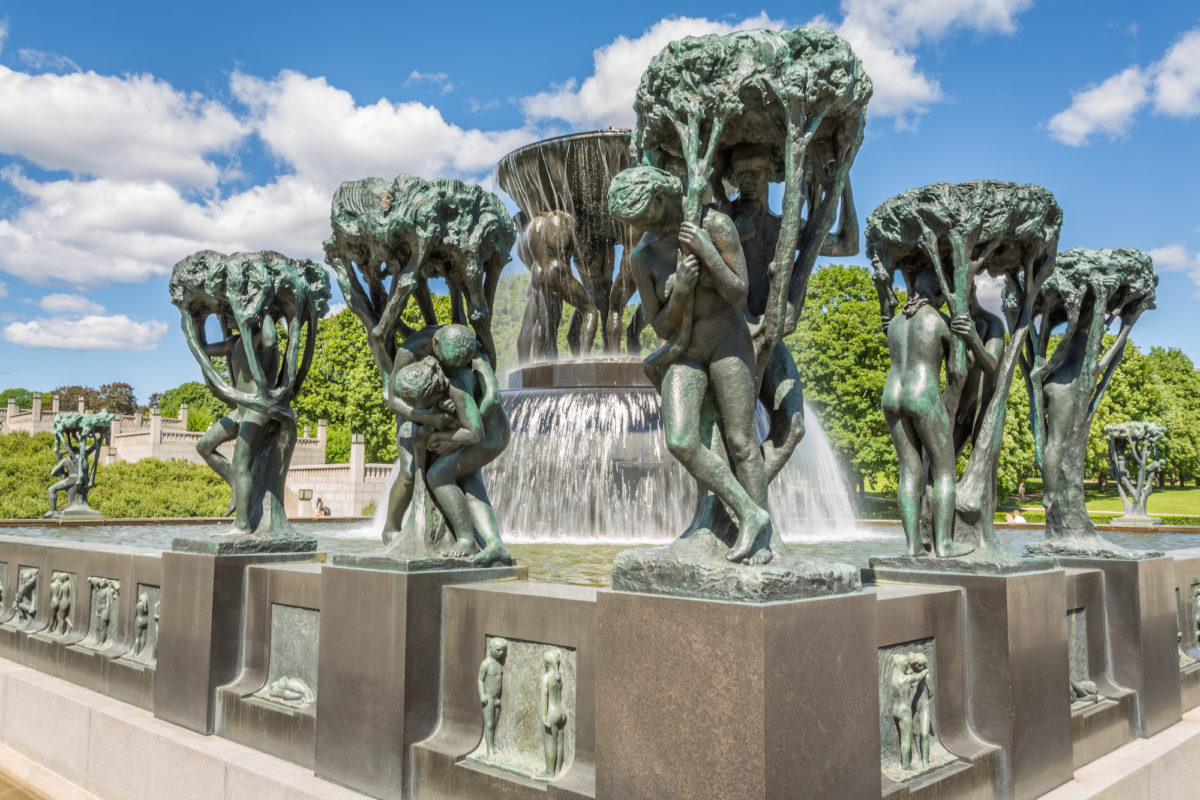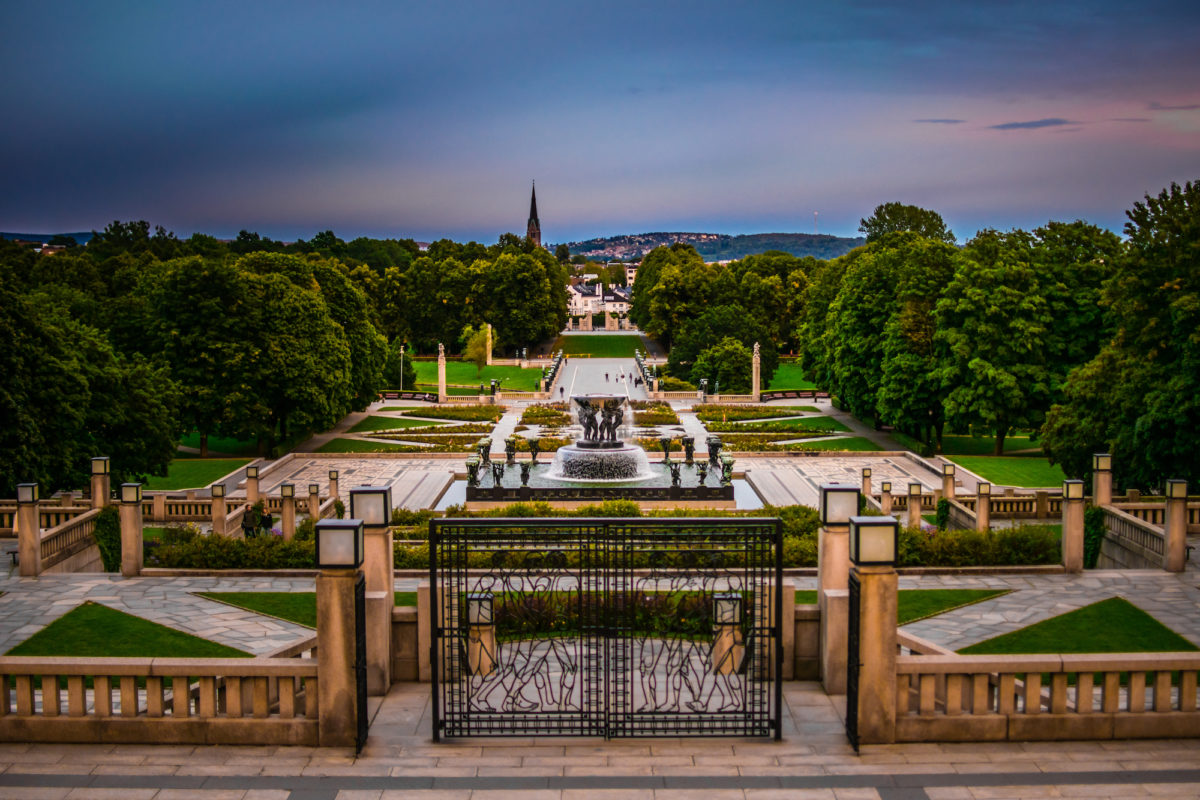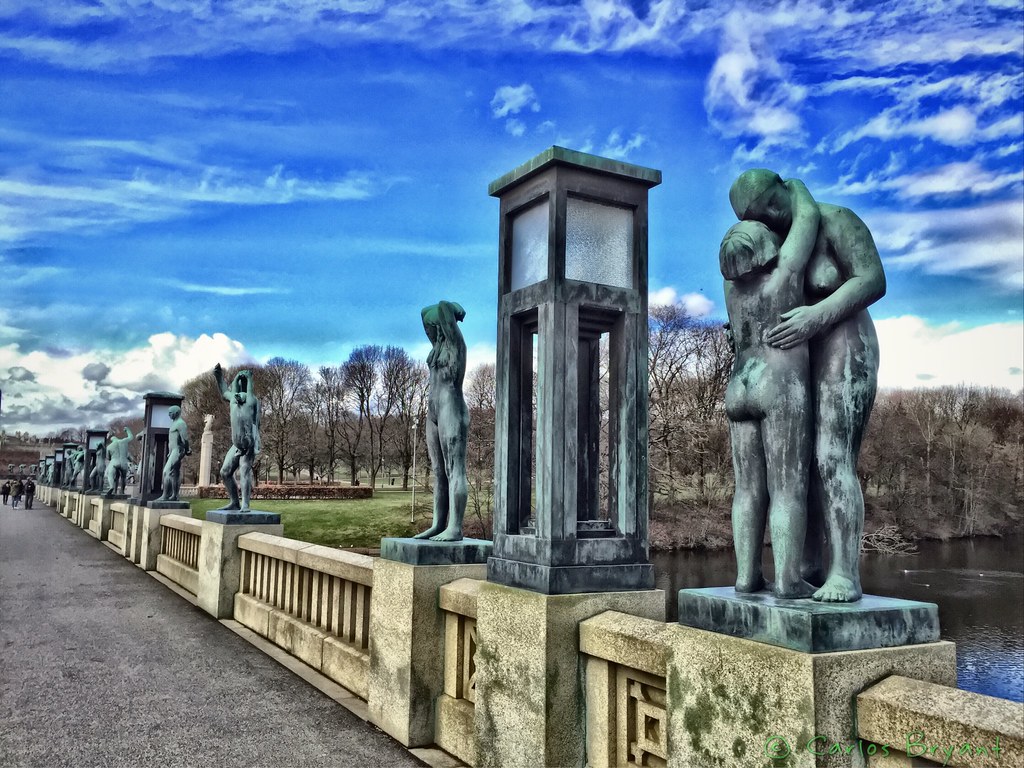
Photo credit: C. Bryant
What
It’s not the sort of stuff you find in your average sculpture park. A giant bronze toddler yowls in anger, while a musclebound man tries to shake a malicious flying baby from his foot. One woman is embroiled with a lizard, and another dances manically clutching her own hair. Other nudes cavort, chat and chill beneath broccoli-like trees around an engorged bronze fountain.
And, at the centre of this vast assemblage of love and violence, a 46-ft tall granite column rises, composed almost entirely of over a hundred naked figures grappling each other in a futile attempt to reach the top. These sculptures, uproarious and unsettling in equal measure, are the works of Norwegian sculptor Gustav Vigeland. Largely executed in the 1940s, they stand in Frogner Park, a 45-hectare green space in Oslo’s well-heeled west end. Comprising dozens of jerky, fleshy things, Vigeland’s work turns an elegant urban park into a menagerie of horrors.
- Photo Credit: Left: Paula Miguel Costa / Shutterstock, Right: Victoria Tori Dim / Shutterstock
Who
It is a truth universally acknowledged that a newly-minted nation needs its national artist. When Norway gained its independence in 1905, Vigeland became the unofficial state sculptor, immortalising Norwegian heroes in granite and bronze. As a young man he had visited Rodin’s studio in Paris, and studied classical antiquities and Renaissance marvels in Italy. For a while his work slotted neatly into convention.
But as the years rolled on, he became more eccentric: out went the busts, in came the frolicking nudes and dragon-like monsters. In 1921, local authorities wanted to demolish his house for a new public library. Vigeland struck a canny deal. The city would grant him a luxurious new home and in return he would solely produce art for the prettification of the city. Thus installed, Vigeland spent the last twenty years of his life stuffing Frogner Park with his menagerie.
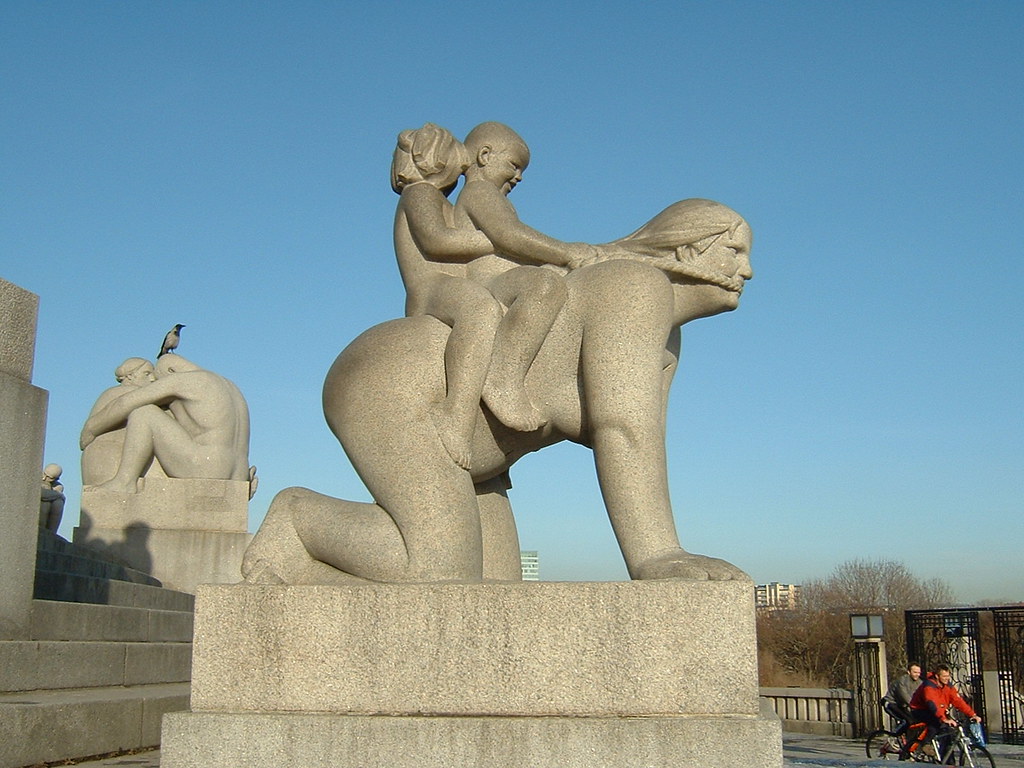
Photo credit: Quistnix!
Where
Oslo has a subdued profile among European capitals, and shares with its Nordic neighbours a reputation for rationality and restraint. The Vigelandsanlegget (‘Vigelands installation’), as it is properly known, is where Norway’s eminently practical capital concentrates its irrationality in a single, glorious spurt. If the 212 statues in the park are not enough, the nearby Vigeland Museum contains a whole lot more.
And for those in search of more conventional public art, the city is well-served by several sculpture parks. Go to small waterside Tjuvholmen for Louise Bourgeois and Anthony Gormley, woody Ekeberg for Salvador Dalí and Sarah Lucas, and to the Royal Palace Gardens for a set of comic figures designed solely for the delight of children.
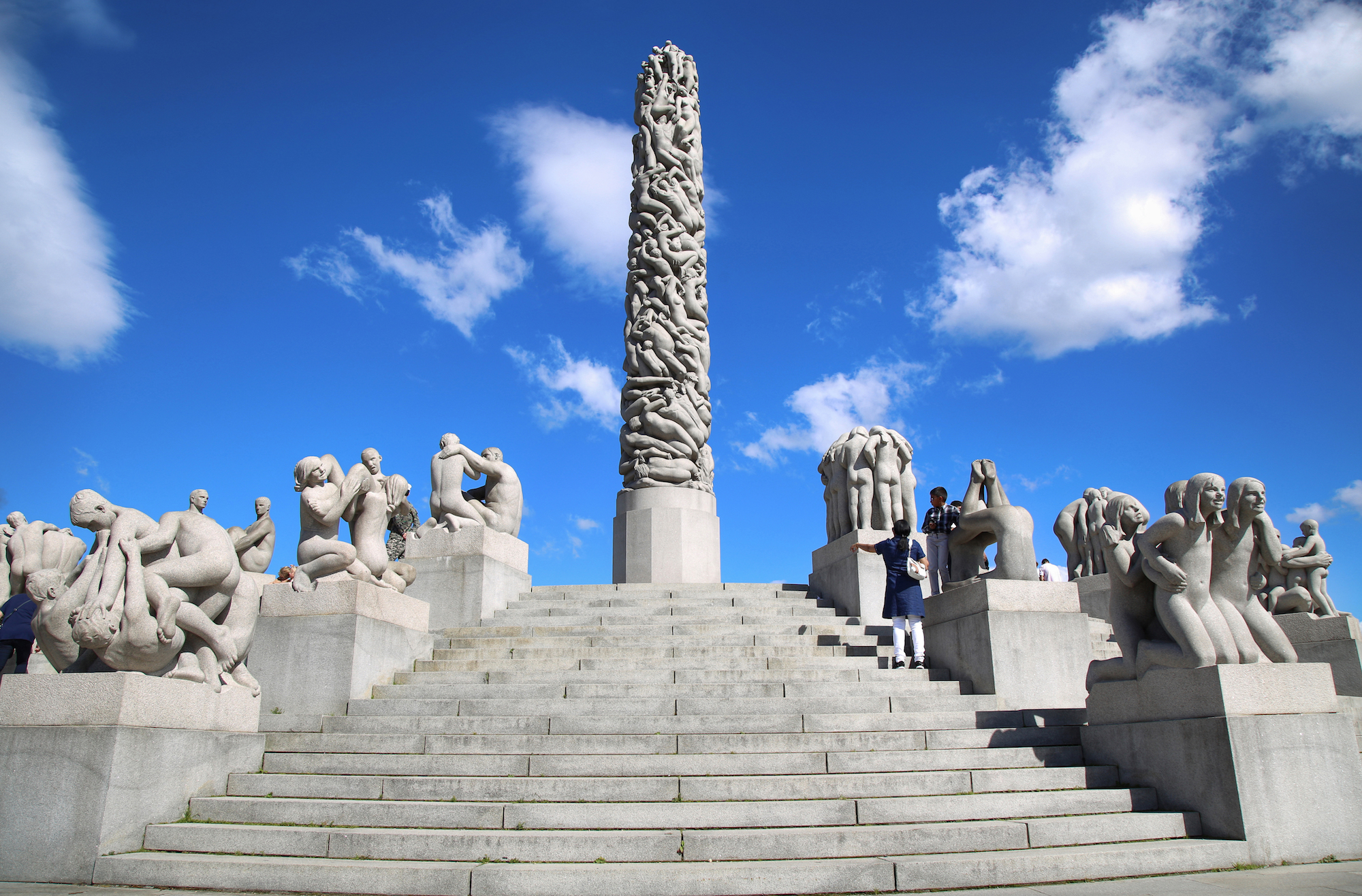
Why
As kitsch as the Vigeslandsanslegget is, it is also an awe-inspiring endeavour. Few artists since the Renaissance have been given such license to run riot. There is an undeniable excitement in seeing the crazed grandeur of his project, seemingly unconstrained by labour or time (or taste); the central column alone took three masons 14 years to build.
More soberingly, the park offers a rare glimpse of a direction that modern art swerved away from. Vigeland’s aesthetic, full of rippling torsos and acts of human-on-human violence, is not a million miles from that promoted by Europe’s fascist dictatorships during the same period. Vigeland himself may have held fascist views: when the Nazis conquered Norway in 1940, he invited officers to visit his studio. Vigelandsanlegget offers a rare, troubling window to an aesthetic (mercifully) cut off in 1945.
